A Guided Ascent of Fogo’s 2,829 summit.
Our Max Cousins visited the islands of Fogo and Santiago, with his friend Stuart, in October 2022. Here’s Max’s account of their guided ascent of (this is a continuation from Max’s other blog Fogo: Born of Fire.)
“The time starts with a 5. It’s early but we’re very awake as this is summit day.
Breakfast has been left out for us and we accept it all, eating some and taking the rest for hill food. Mauricio meets us bang on time at 6:30 and we head out from Casa Marisa II.
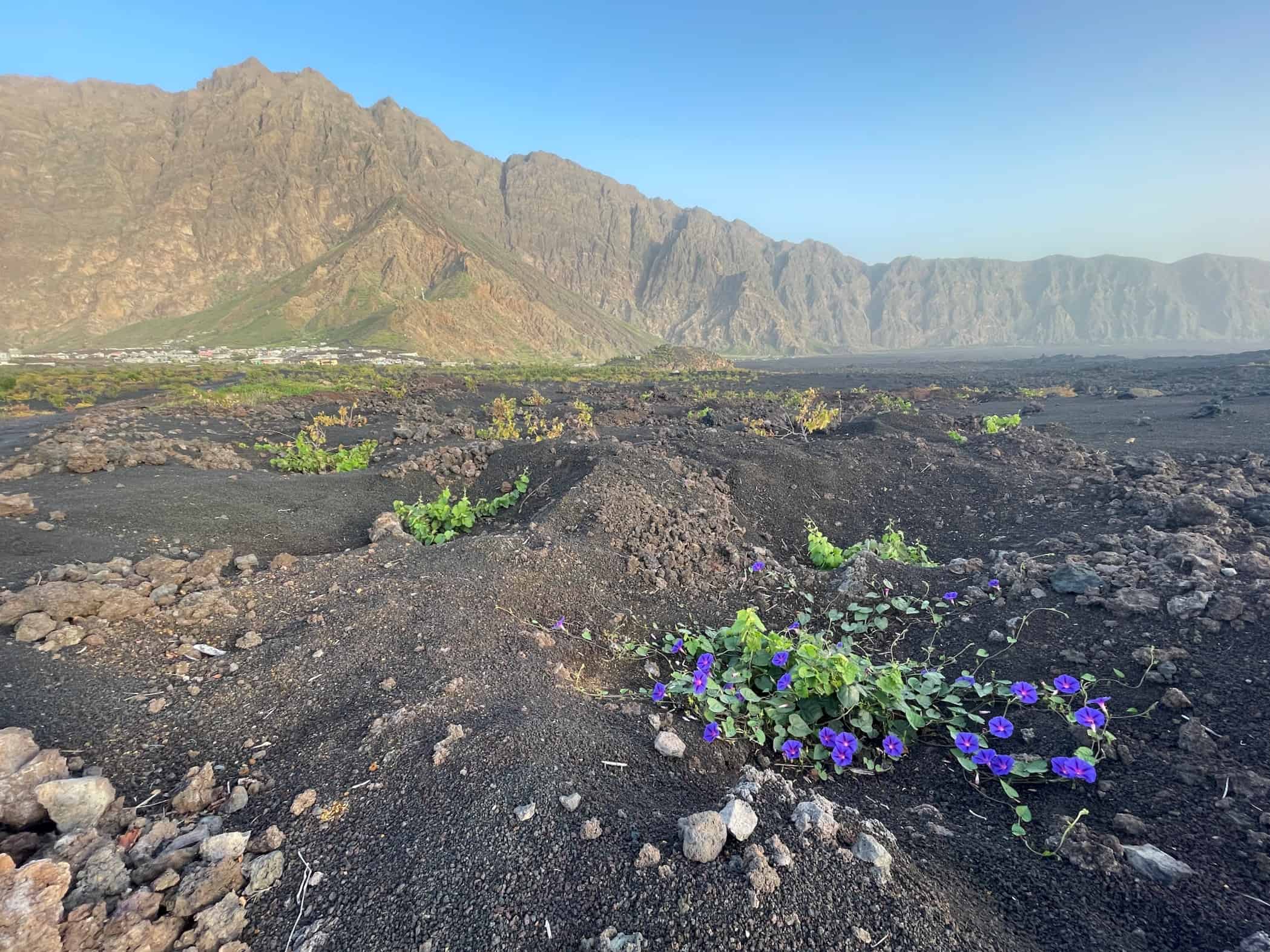
It’s light but the sun hasn’t yet crested the crater rim. Our local guides recommended starting the climb early to avoid ascending in the full heat of the day. A half hour walk-in along the cobbled road and volcanic cinder tracks later and Mauricio stops. “Let’s take a drink” and we all do so. Hydration is important. Neither of us had noticed the slight path heading perpendicularly from the main track, marked in places by cairns, the way to the summit.
The Fogo summit cone – a perfectly-shaped volcano – rises 1,100m from the floor of the Caldeira where we’ve stayed the night before. Today is clearer than yesterday, the Saharan dust not as prevalent in the air. We can see more detail on the slopes even though the sun still isn’t fully up. The majority of the cone is of vast slopes of unconsolidated ash. It’s important to know exactly where you’re going in ascent and descent and we’re grateful that we don’t have to think about the route. We were walking with Mauricio yesterday and today the company is even more relaxed.
Mauricio explains that the path generally follows a more consolidated spur, broken in places by a few stretches of ash, into a steeper and rockier stepped upper section that’s pretty secure. We set off, the vague path swinging this way and that. The sun rises, picking out a party above us who were prepared for an even earlier start.
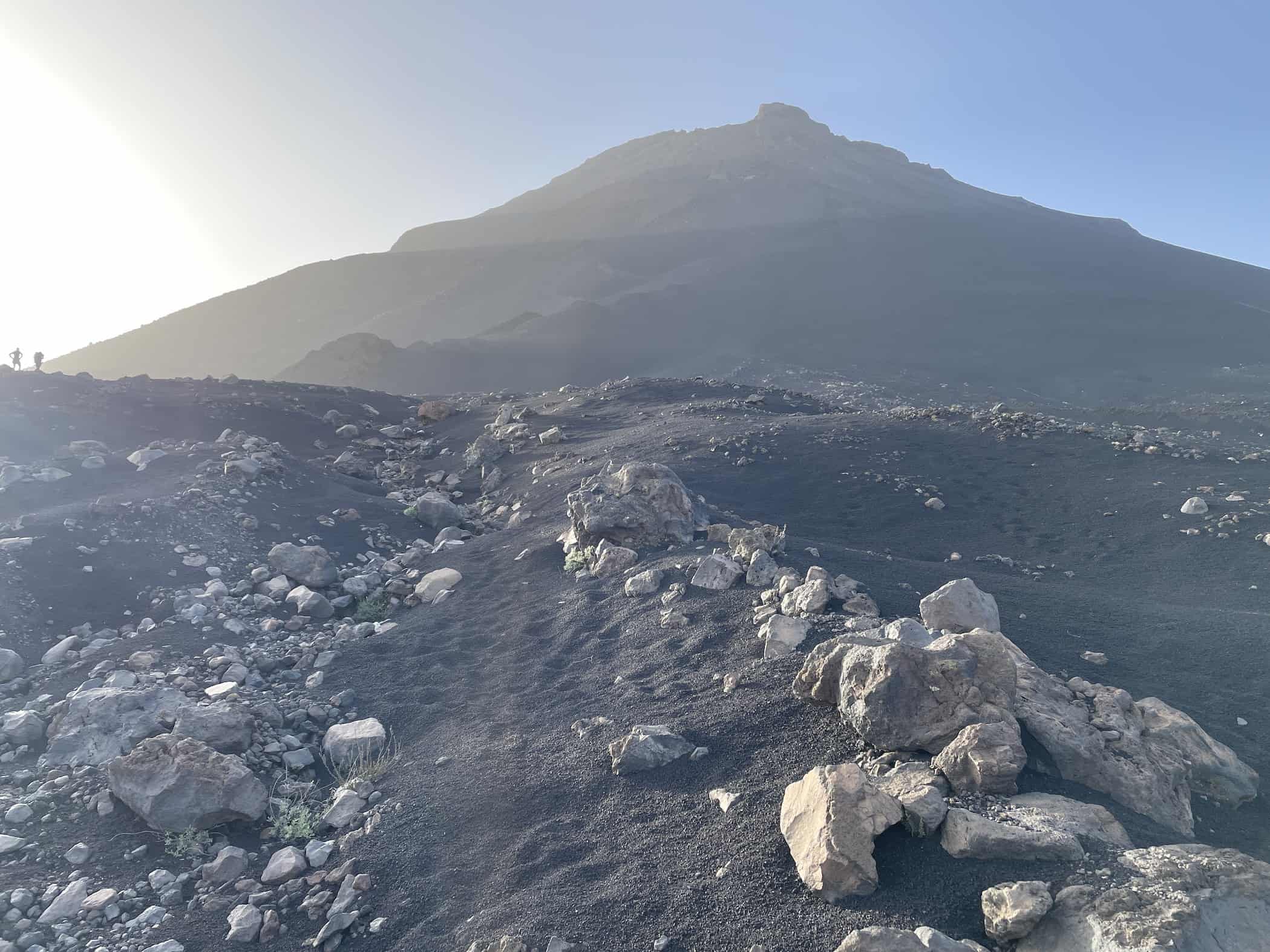
The way steepens and we chug-chug-chug up ash eventually to reach more solid ground. Mauricio points out a line of widely-spaced footsteps parallel to us in the ash “That’s one way down but today we’re going to visit the crater of 2014”. We’re excited for all of this experience and one part of that is the descent – a madcap dash down soft ash; scree running but without so much danger of breaking an ankle.
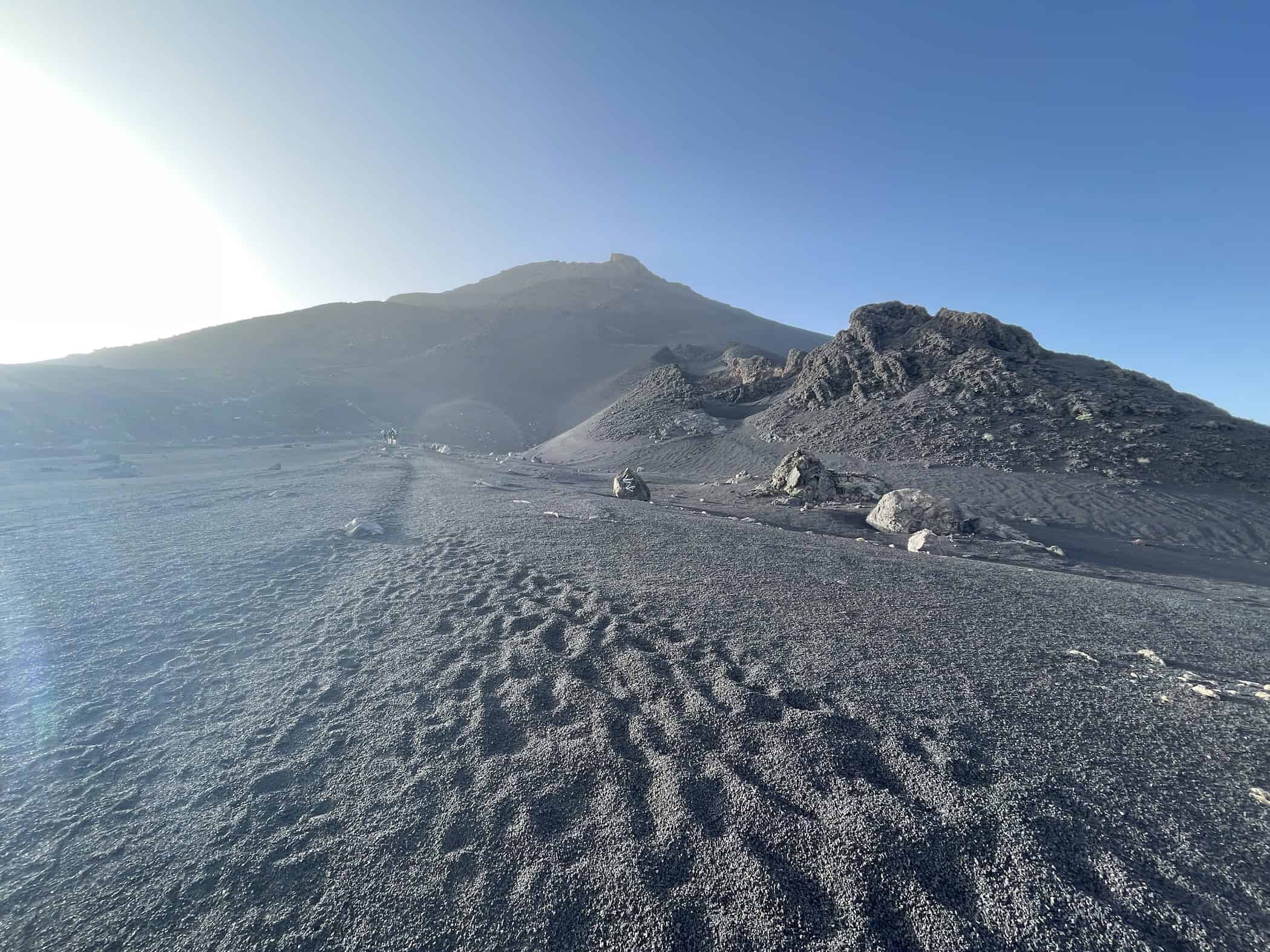
Sun’s up but it’s early and still relatively cool. Stu and I are in shirt sleeves and shorts; Mauricio in a hoody and tracksuit trousers both because he’s acclimatised to his own country and to protect from too much sunshine. We ascent steep and broken natural steps on the way to the upper slopes. Not quite hands-on, yet.
Drink? Mauricio is very good at moderating our eager pace. We stop and stare at the view: the volcanic slopes dropping to the vast Caldeira floor. It’s easier to pick out more of the subsidiary cones from here. In the east the clouds are building above Pai Antonio, feeding the abundant plant life that grows there. We look down on two or three other small groups ascending below, their bright clothing micro-dots in the monochrome landscape.
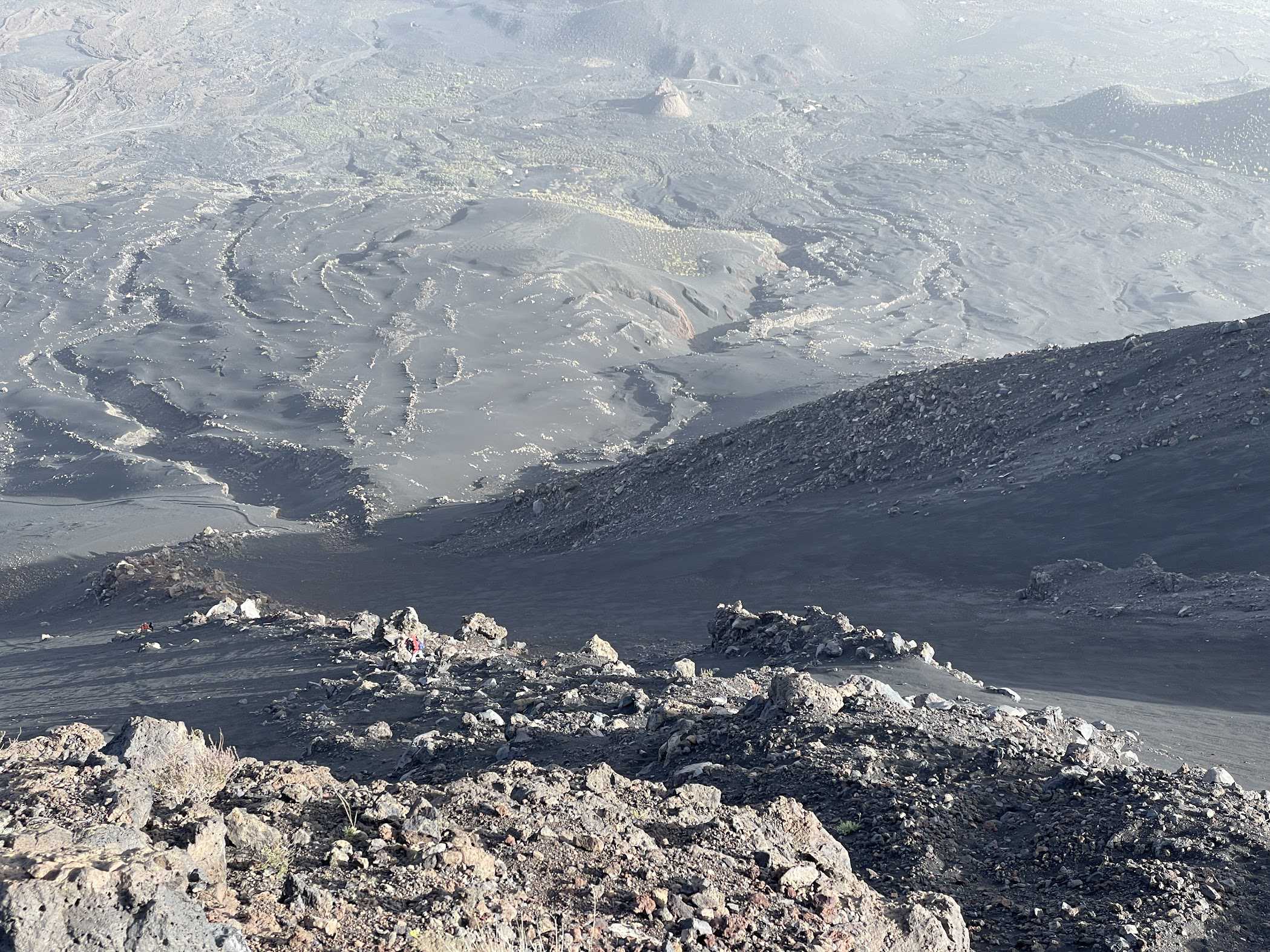
It’s starting to smell like a volcano. Sulphur is in the air as we scramble the final hundred metres to crest the upper rim. The rim feels a precarious place, in front into the crater it’s a steep drop, slowly levelling out to the floor 180m below. There’s steam rising in a couple of places, sulphuric vents making the smell we picked up earlier. It’s very impressive and we head south around the rim. There’s fixed metalwork aiding direct ascent to the highest point and suddenly, we’re on top of Cape Verde.
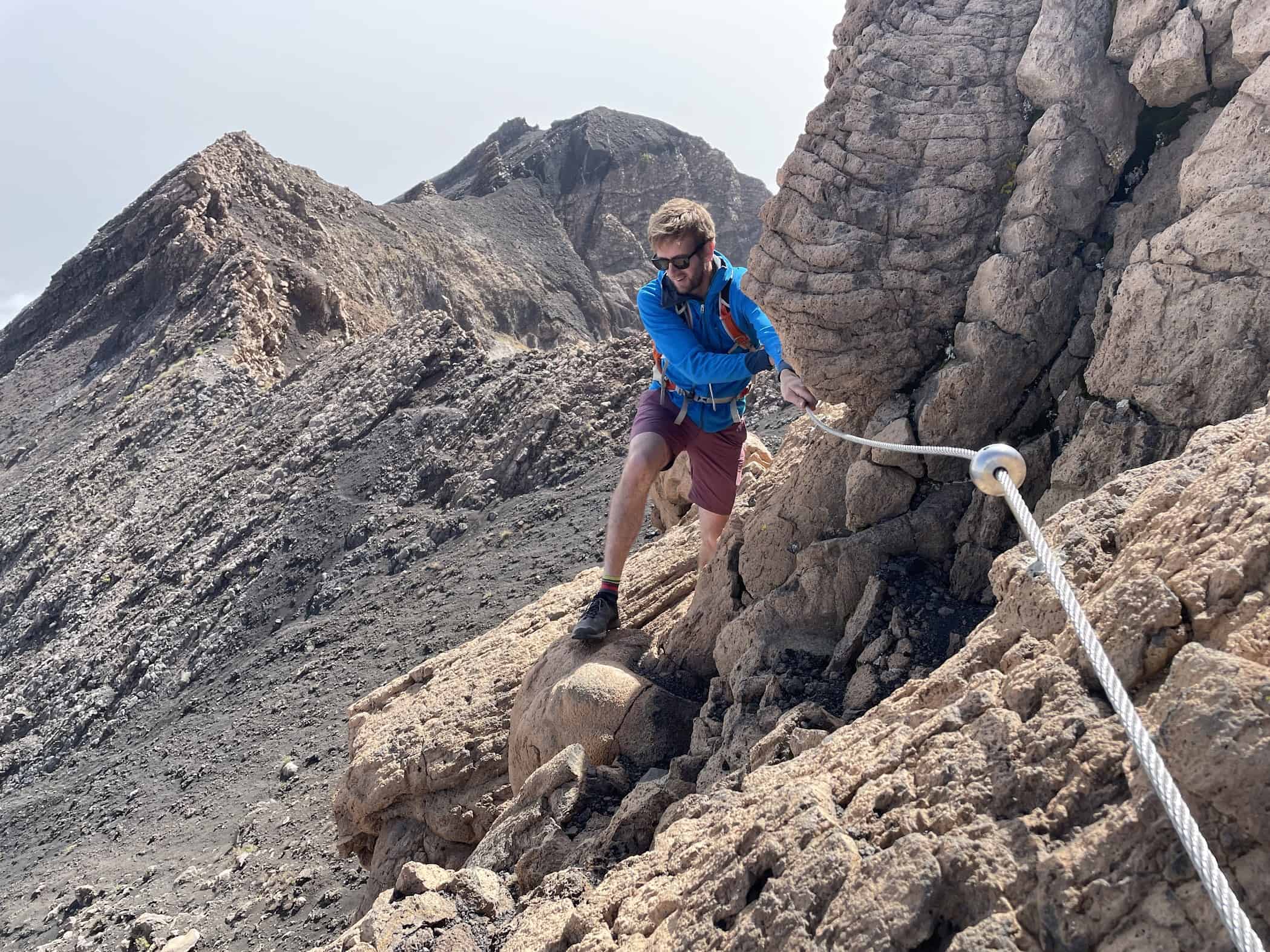
Time for a snack, a rest and to take in the scene.
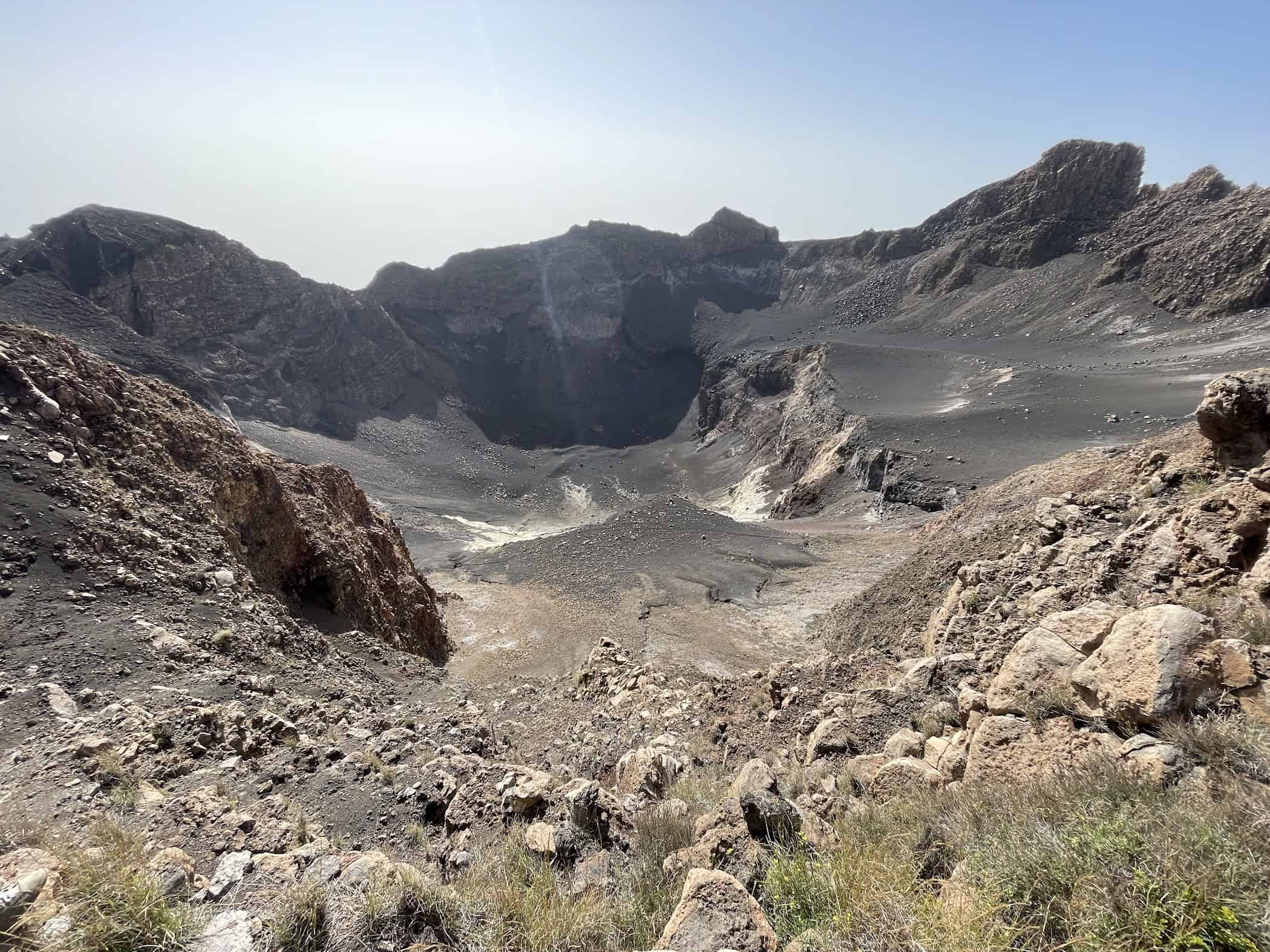
Volcano-side, the upper crater seems huge. It’s 500m in diameter and encircled with jagged, broken cliffs. Turning around though, the Caldeira is immense. It’s possible to pick out individual lava flows and Mauricio explains what happened in 2014. “The lava from 2014 first tried to flow out the south side there and we thought our houses might be safe. But it couldn’t flow further south and so turned north, through Portella and Bangaeira over there.” He’s matter-of-fact but is describing the loss of the old villages – and his own house – that he witnessed himself. We asked if he was worried about eruptions “No, we get days of warning beforehand. Canadian scientists have installed detection systems. There’s plenty of time to get out to safety.”. We take our tourist photos.
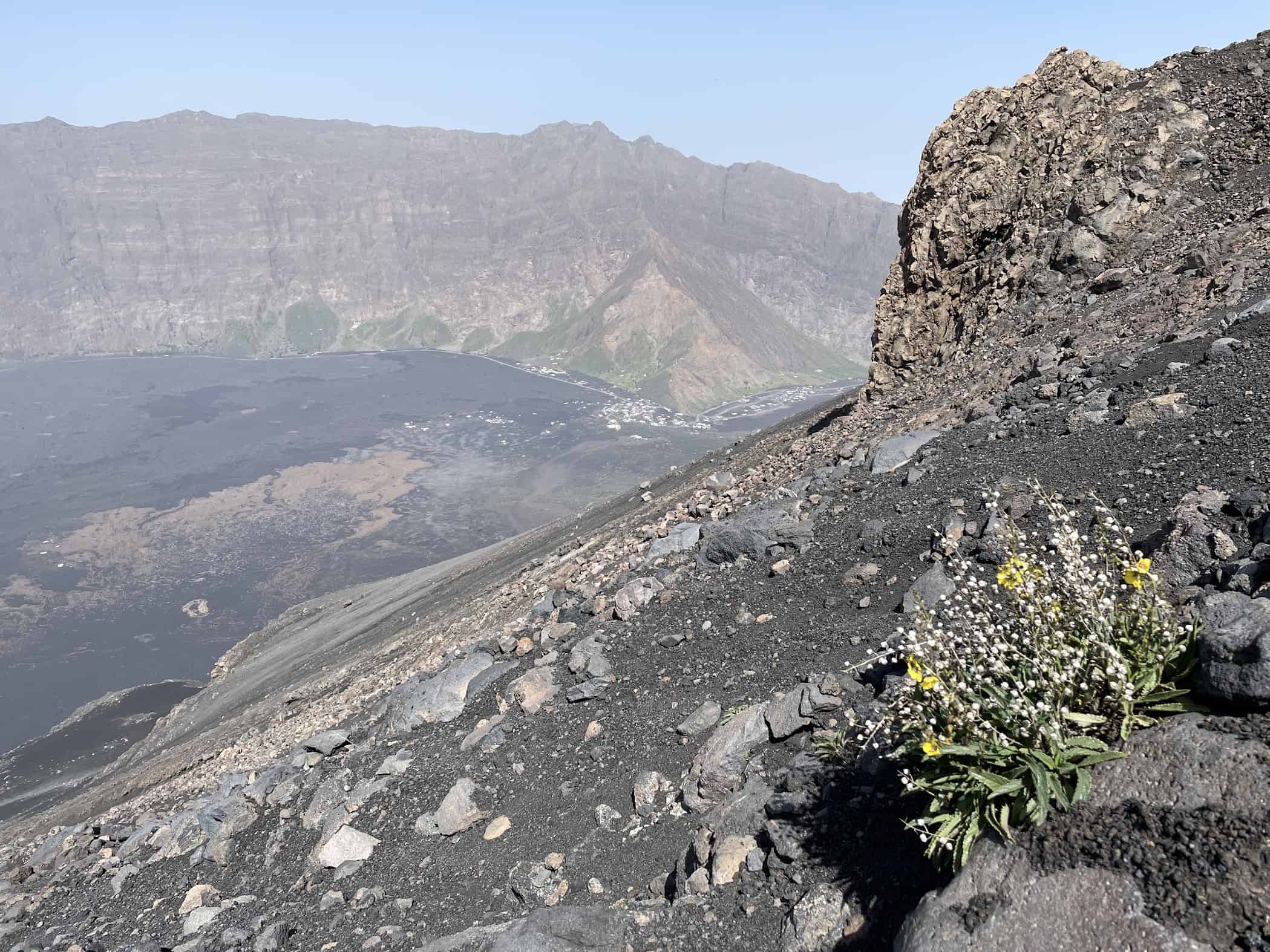
The start of the descent is steep and in places loose but Mauricio shows us the way. There’s an individual far below us and Mauricio watches keenly as a rock comes loose from a mid-distance adjacent slope, falling generally towards the walker. Comfortable that it’ll miss, Mauricio turns to us and says that he thinks we should walk in a different direction for a few metres to avoid rockfall onto the person far below.
At the base of some steep loose zig zags the path runs out. We stop, sit and put on our rock gaiters as we’ve been forewarned of what comes next.
From the base of the zig zags an unbroken mid-grey ash slope sweeps some 800m in distance, 500m in descent towards the gaping craters of 2014. Mauricio sets off, casual as the experienced guide he is. I film him for a while then set off myself to join him where he’s waiting. Stu follows behind. After we regroup Mauricio lets us off the leash and Stu is away – a rush of sound and dust plummeting towards the base of the slope. I follow, trying to both film and keep up but this proves impossible and I settle into my own pace. It’s a very floaty feeling with a delicious edge of peril as buried within the ash are random volcanic rocks – hitting one puts you off but the ash soaks most of the impact, enabling continuation of balance.
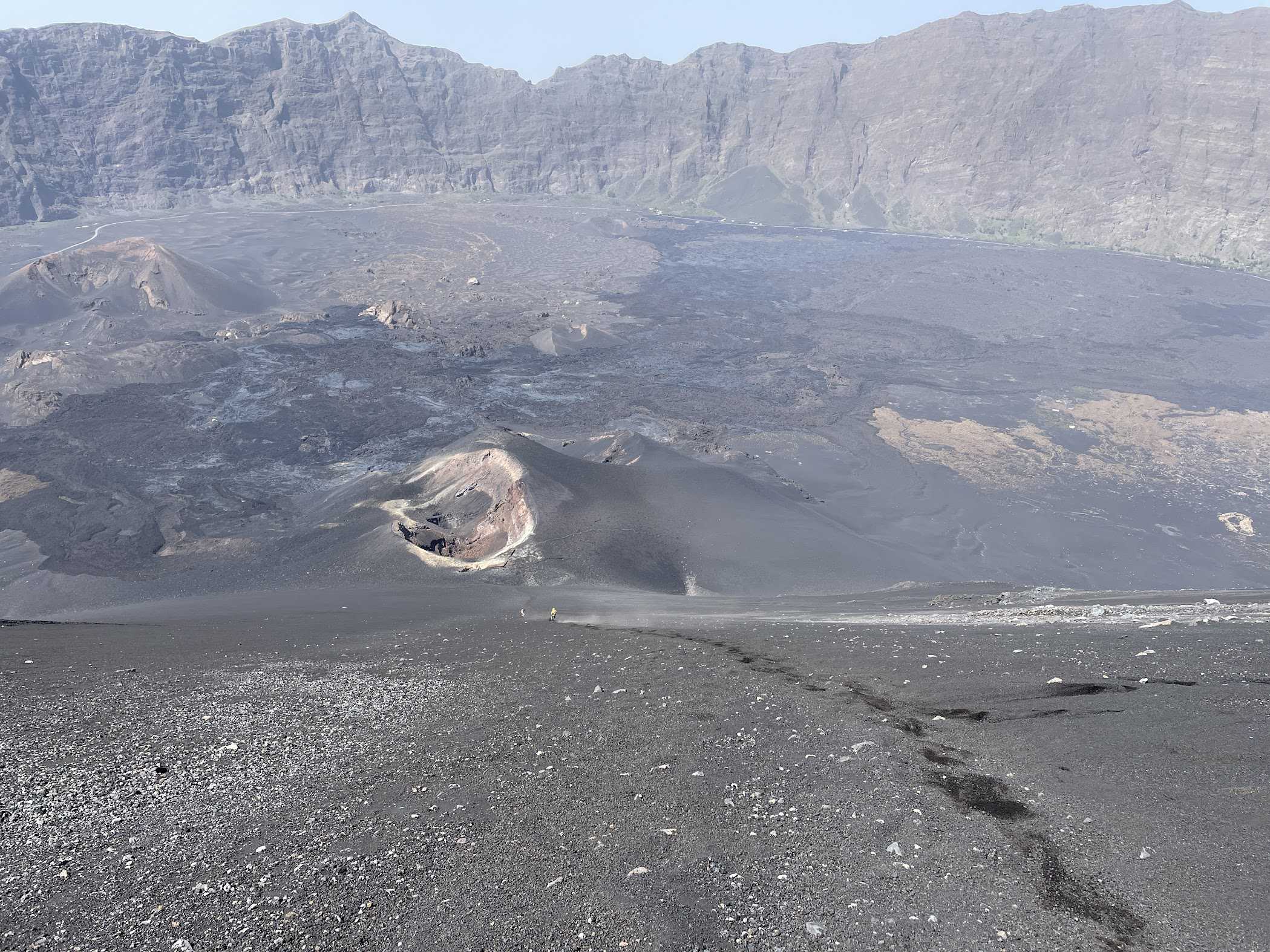
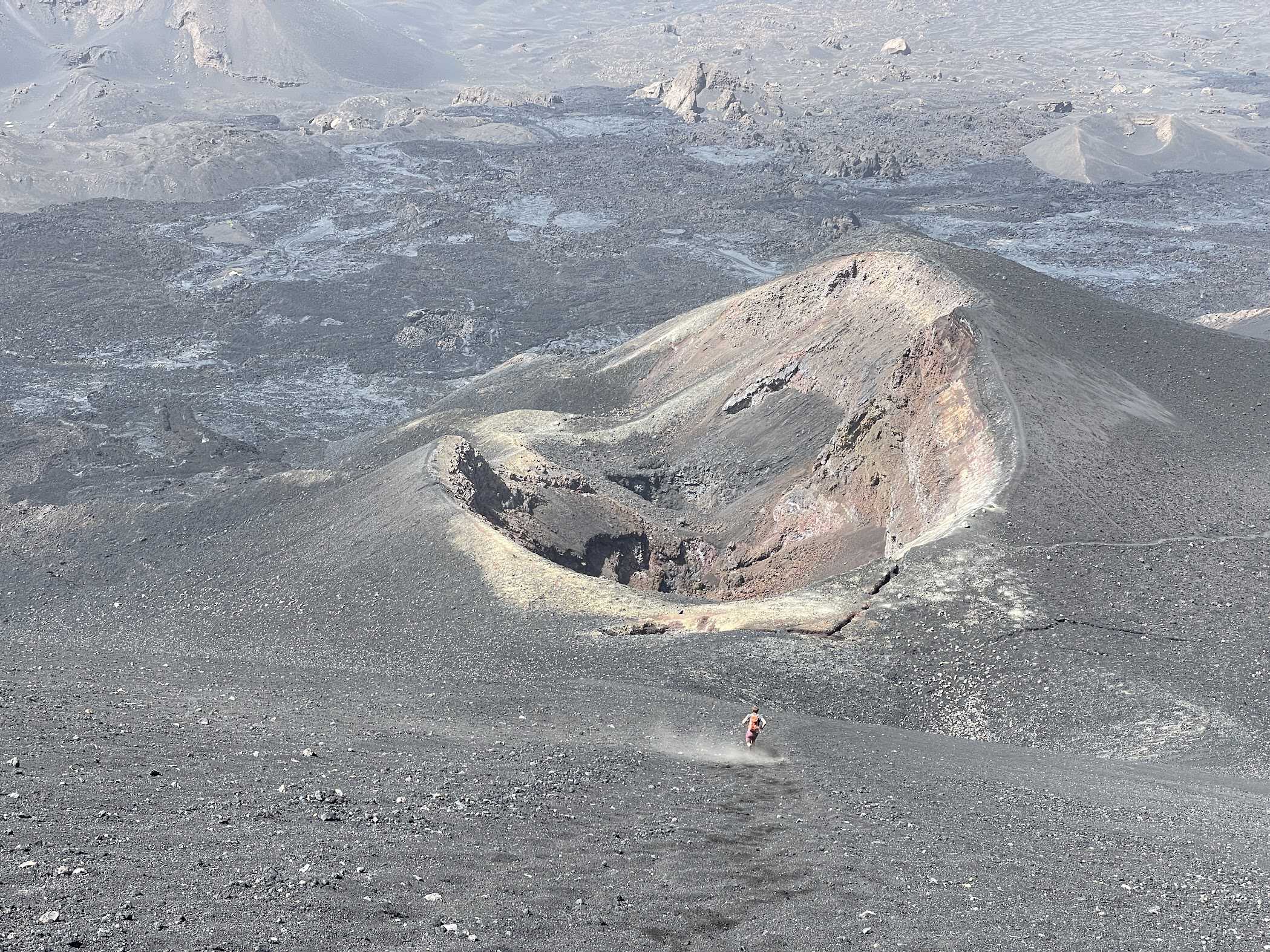
After not very long at all we’re down at the 2014 eruption site. We stop to empty our shoes – so much for scree gaiters! – and take photos of the chasm from where the destruction emanated. It’s hard not to find it starkly beautiful, the scorched rock of variegated colours and the rents in the earth echoing the majesty of the Caldeira and the upper cone.
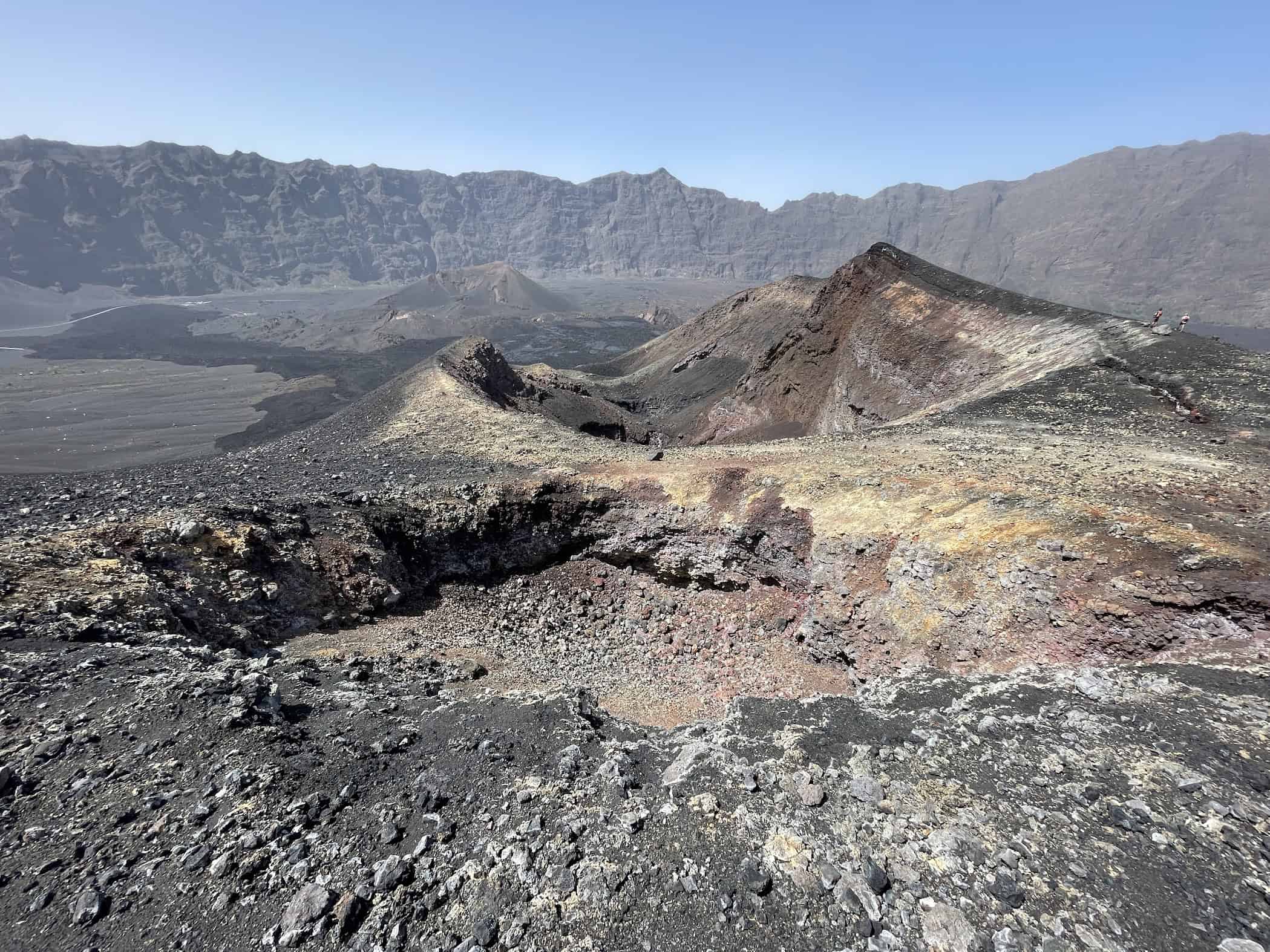
We descend more slowly now towards Portela and lunch. As we get closer to town there’s more and more green growth. We’re lucky enough to be visiting Cape Verde when it’s green – recent months of rainfall have encouraged anything that can grow to do so. The green plants and black volcanic ash are extremely picturesque.
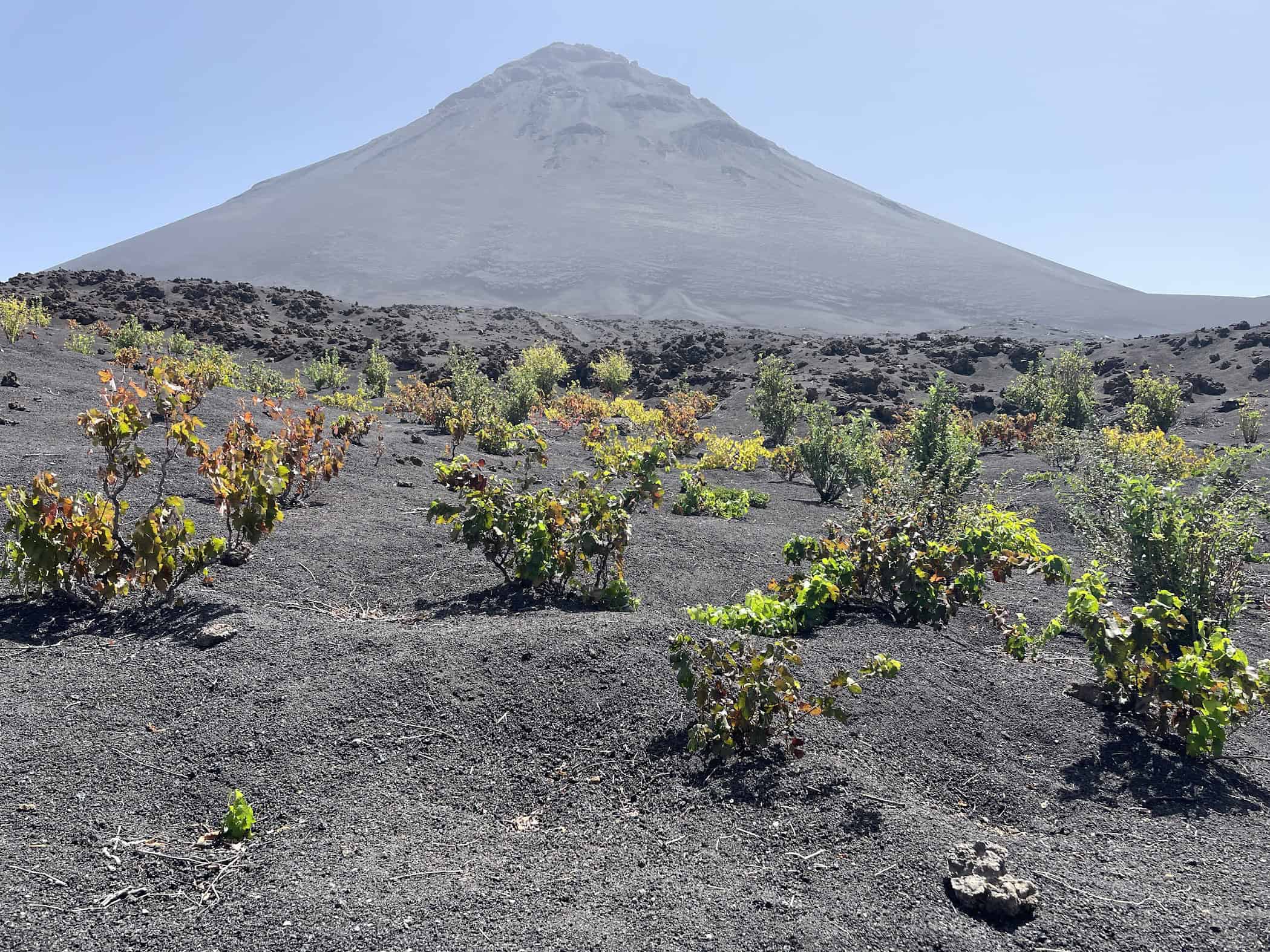
Closer still to town we pass other eruption tracks and walk through agricultural fields within the ash. Grapes grow up here in the Caldeira and delicious wine is produced, red, white, rose.
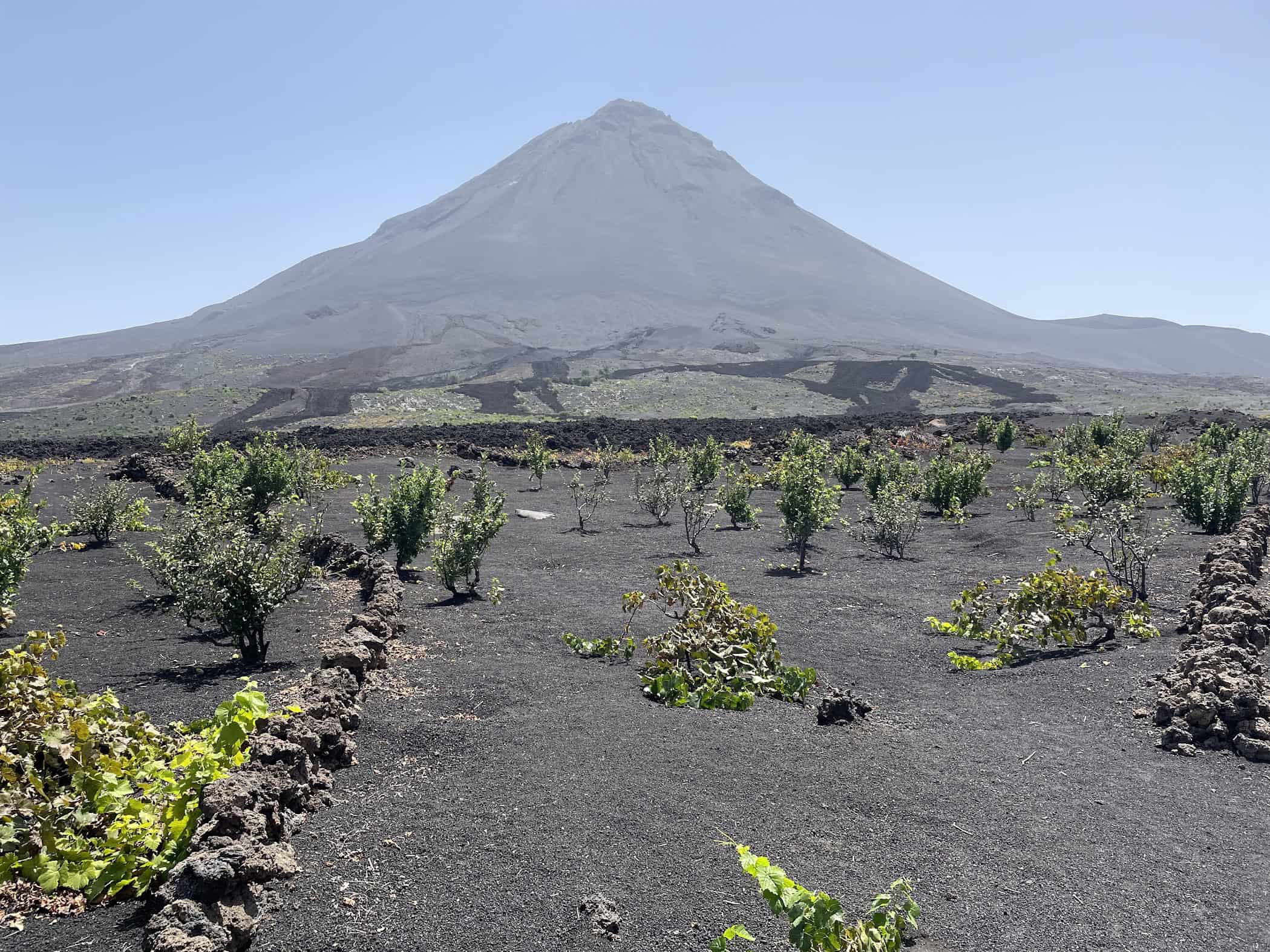
We walk into town and lunch. After lunch Mauricio shows us something in town that amazes us even after all we’ve seen in the past 24 hours.
The vast majority of the buildings of Portella and Bangaeira were destroyed by the recent eruption. We are taken to a building that survived by the skin of it’s teeth – Pensao Pedra Burkan. It’s a lovely guesthouse that you can stay in if you travel to Fogo with us. We’re already impressed that it’s survived the lava flows that parted left and right of it but then, Mauricio shows us into the breakfast room where we just stop and stare:
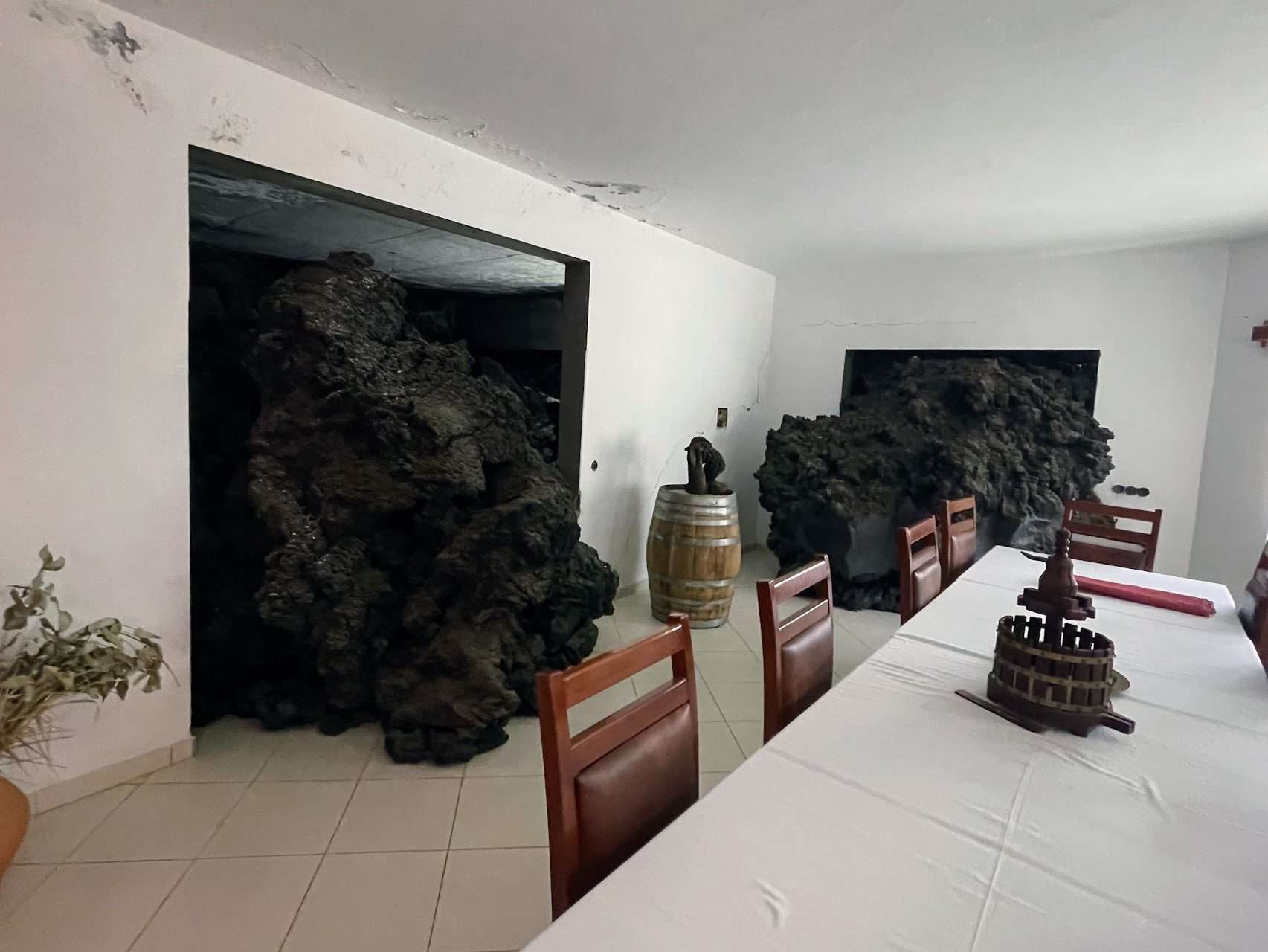
Lava entered the house and the breakfast room at two points – and then, incredibly, stopped. The owners have left it there as the ultimate, unbeatable talking-point feature; a message from the forces they choose to remain amongst.
Mauricio bids us goodbye for now and we head back to Casa Marisa II to try to process the day. I must say that Fogo wine helps immensely.”
Cape Verde Choice tailor made holidays.
There is so much to explore on Cape Verde – the 9 islands each have their own flavour and they are surprisingly different. The coffee is also excellent!
Max and Jake are our specialists for Cape Verde – they would love to hear from you and can talk to you in detail about the delights of this beautiful archipelago.
Call us: on 01768 721030.
Or CLICK HERE to send us an enquiry.








Follow us online